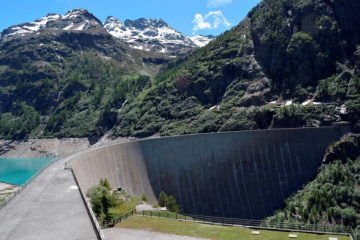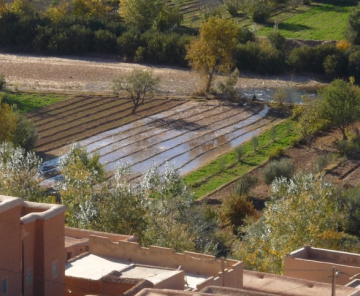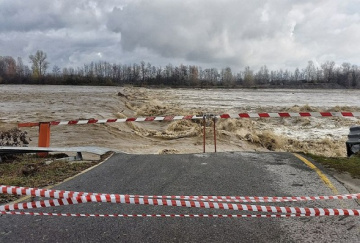HYDROLOGY AND HYDRAULIC CONSTRUCTIONS
The Hydrology and Hydraulic Constructions area specializes in research on hydro-geological risk and water as a resource for humans and the environment. We deal with theoretical and applied research on extreme events and infrastructures for their mitigation, field measurements, data analysis, physical and statistical modelling, mechanisms and impacts of climate change. Our goal is to develop scientific knowledge and engineering solutions for a sustainable, safe and efficient future. Research activities have led to the publication of numerous scientific articles in high-level journals, which placed the area first in Italy in the latest Research Quality Assessment (VQR) of the ANVUR Agency.
The main research topics covered are as follows (in brackets, the lecturers most involved):
Statistical hydrology (Viglione, Claps, Laio, Ganora, Mazzoglio): modelling of extremes, time series analysis, forecasting in uninstrumented basins, uncertainty analysis, cost-benefit analysis in hydrological design.
Prevention and control of hydro-geological risk (Viglione, Claps, Ganora, Mazzoglio, Poggi): large-scale flood and cloudburst risk mapping, hydrological safety management and dam risk, risk awareness in the population, hydraulic compatibility of bridges
Effect of climate change on flooding (Viglione, Claps, Ganora, von Hardenberg): Statistical methods for trend analysis of extreme precipitation and flooding, long-term hydrological modelling and evolutionary effects in catchments affected by snow accumulation, assessment of the sensitivity of precipitation to global temperature rise in climate models.
Impacts of climate change on the water cycle through high-resolution global climate modelling (von Hardenberg): Numerical global climate modelling at high resolution, analysis in numerical simulations of the mechanisms and impacts of climate changes on the water cycle, extremes and droughts. Study of climate tipping points.
Water resources assessment (Viglione, Claps, Ganora, Laio, Poggi, Tuninetti, Tamea): large-scale statistical modelling of surface water availability, assessment of human-induced effects on water resources, large-scale assessment of residual resources for hydropower, multi-objective management of reservoirs for multiple use, integration of water, hydropower and energy resources in energy communities at basin scale.
Irrigation and agriculture (Tamea, Laio, Claps, Tuninetti): modelling of evapotranspiration, quantification of crop irrigation requirements, assessment of the water footprint of agricultural products, effects of climate change on water resources for agriculture, environmental cost of water withdrawals, irrigation systems and resource management for irrigation.
Virtual water and international trade (Laio, Tamea, Tuninetti, Sciarra): international food trade and virtual water, network analysis of international trade and crisis propagation, environmental and socio-economic aspects of food trade, water-food-energy nexus.
Energy production from sea waves (Poggi): theoretical and experimental study of an innovative hull for wave energy production, wave energy estimates for energy converters.
Physical modelling at laboratory scale (Poggi): complex water flows in natural and built environments, interaction between water flow and infrastructure, design of spillways and outlet works for dams, testing of prototypes up to 20 kW and modelling verification of larger turbines.
BluEnergy Lab (Poggi): a multi-site laboratory dedicated to the combination of 'Water and Energy' for the study, design and testing of new technologies and innovative turbines. The laboratory has a main part at the Politecnico di Torino and two external sites, along the coast of the island of Pantelleria and on an irrigation canal in Agliè (To).
Risk analysis for dams (Claps, Poggi): hydrological hazard assessment of dams on a national scale, Experimental analysis of dam-break wave propagation in small dams.
Water resources in mountain areas (Tamea): meteo-hydrological monitoring in mountain areas, field activities and Glacier Lab, modelling of snow and ice accumulation and melting processes, evaluation of water balance in mountain and foothill areas, quantification of water resources from melting and effects of climate change.
Lecturers and researchers from the Hydrology and Hydraulic Constructions area participate in and lead important nationally and European funded projects (RESBA, CUBIST, FLORA, RENERFOR, ALPIMED CLIMA, GAG, CRITICAL_EARTH, DESTINATION EARTH, Clim2FlEx, BECCA, SPHERE, MountResilience). Our research is also carried out in national and international collaborations with public bodies and other universities (RETURN, CLIMAXPO), research organisations (EC-Earth), small and large companies (NODES).
|
|
|
|



